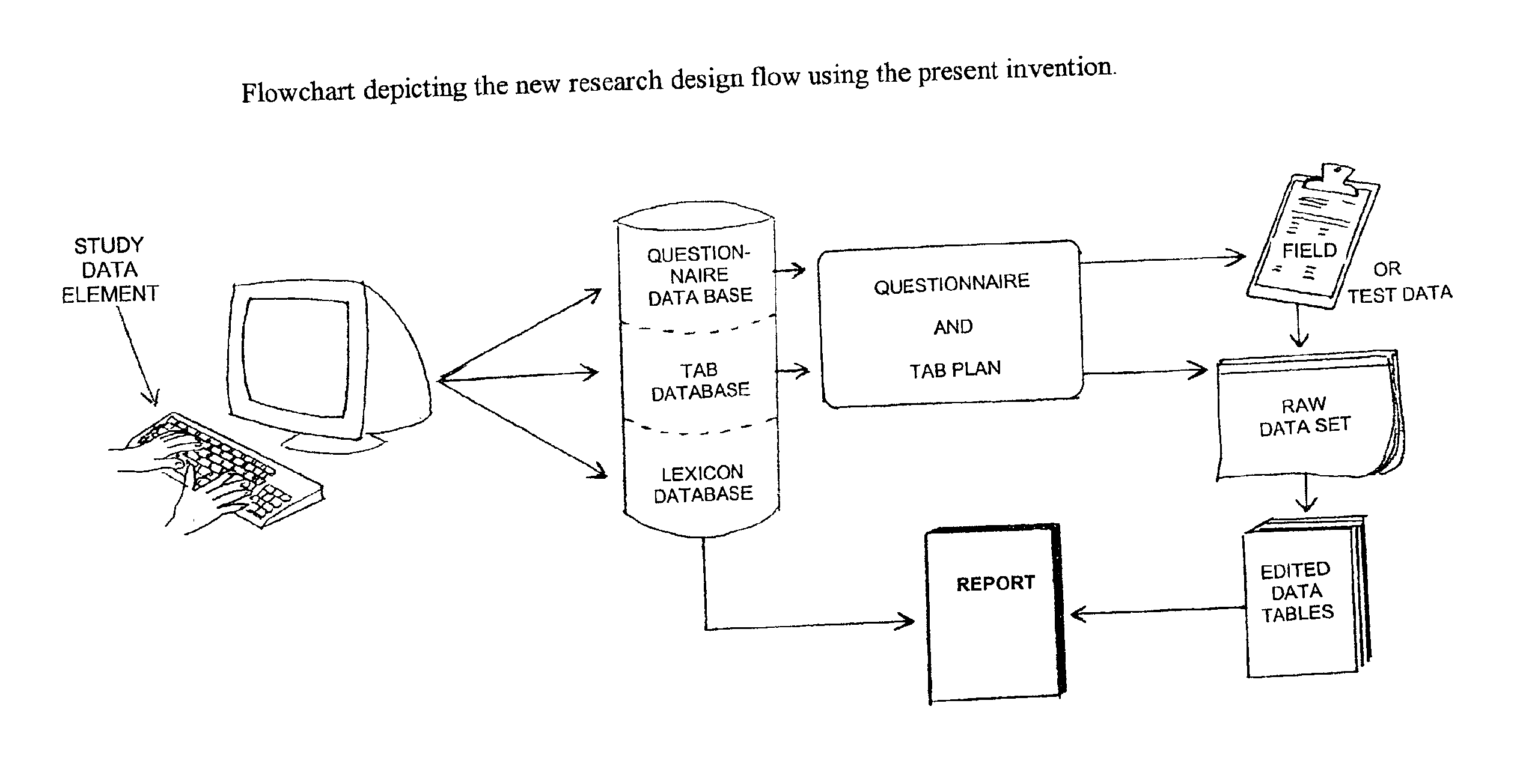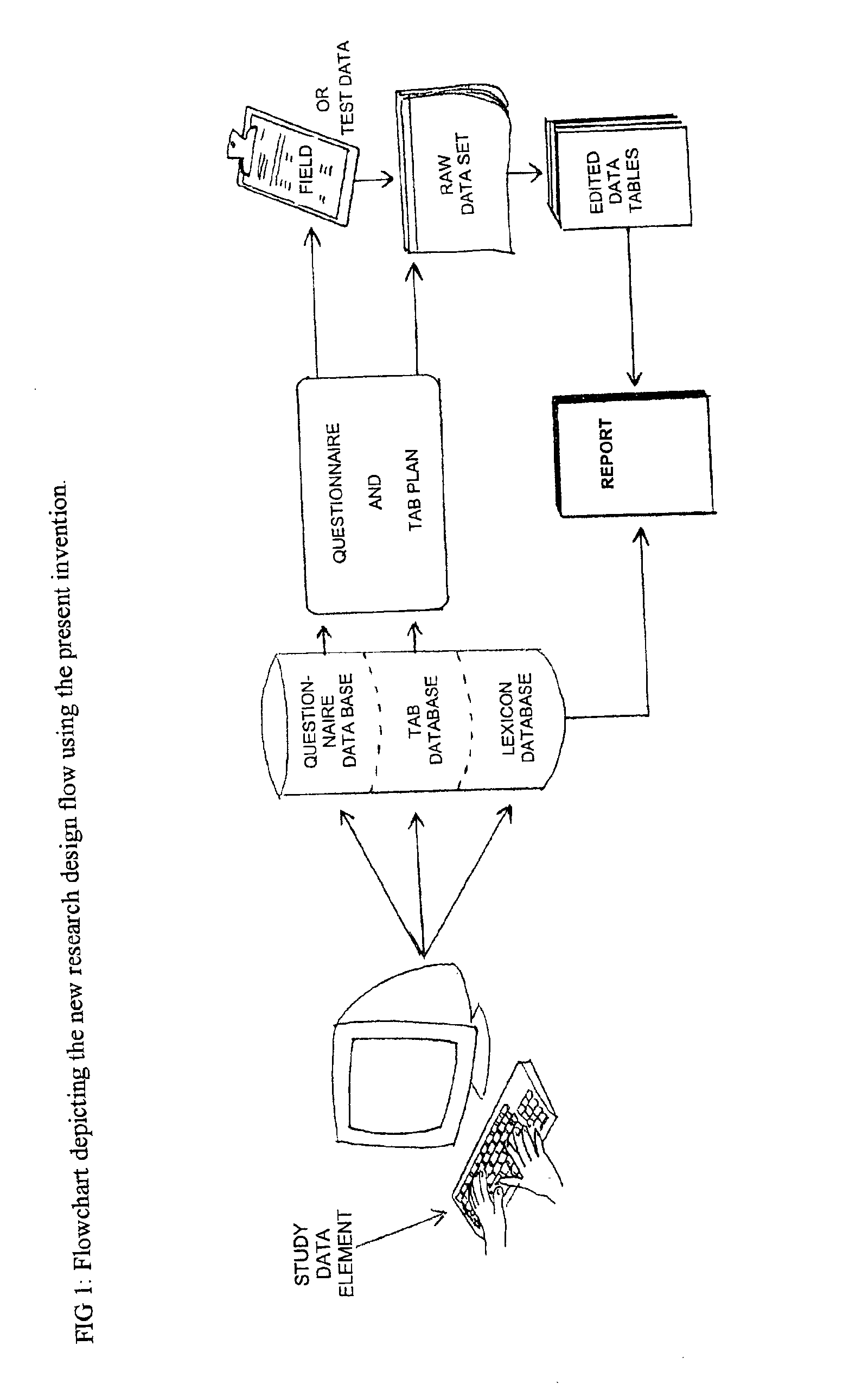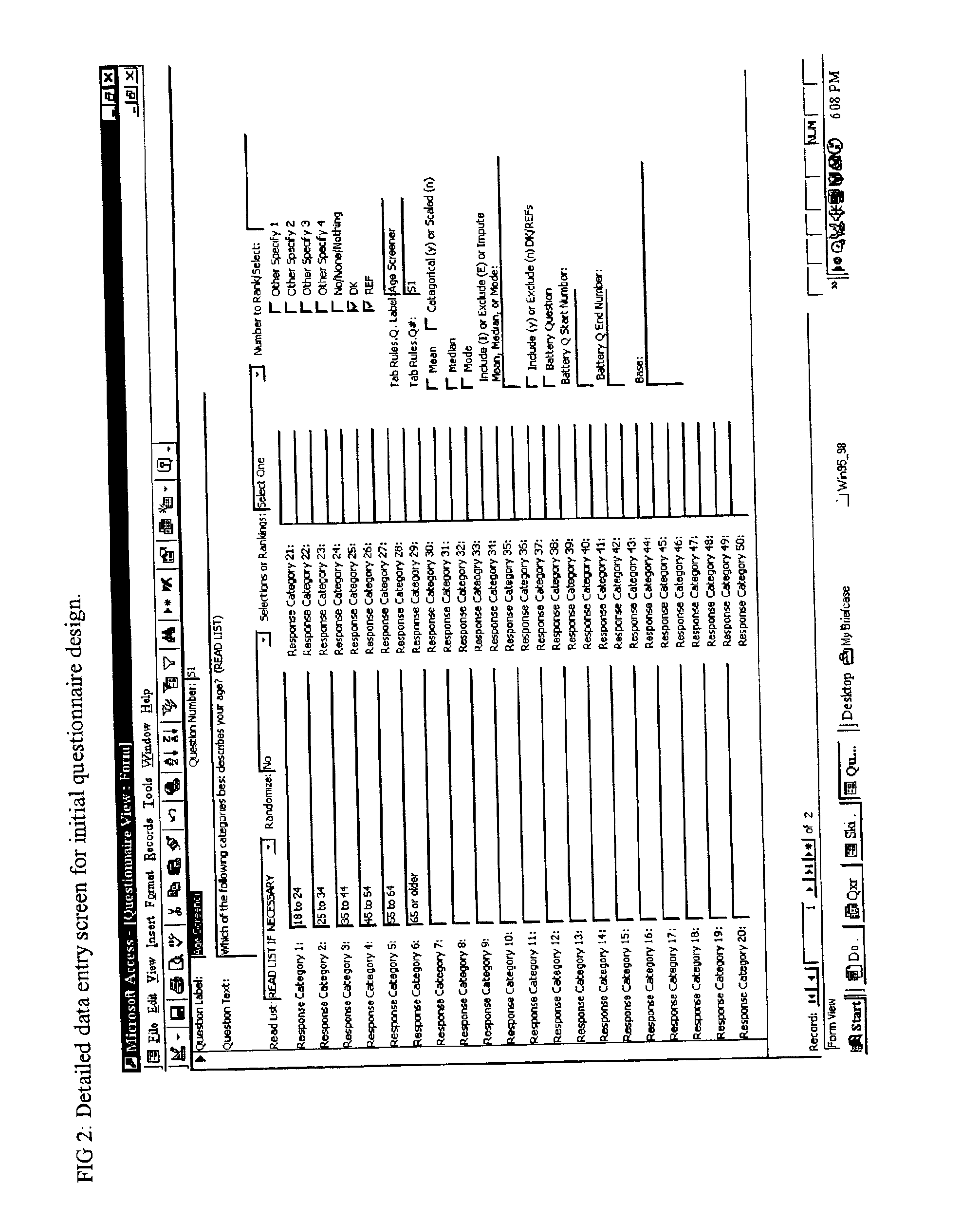Additionally, the ability of
software to be programmed to mimic repetitive human-
decision making has not been made use of for the most ordinary market research tasks.
In practice, the intricacies of a proper study design are frequently forgotten, and then recalled again at the last minute, resulting in repeated errors of omission and inconsistency.
Recent interest in
the internet has resulted in a plethora of web-based survey tools which attempt to embrace the whole of the study process for online surveys, however these programs have been designed by web-based programmers, rather than market researchers, resulting in a multitude of products which either: a) are ignorant of market researchers' actual needs (for example, none of the stand-alone end-to-end web products currently on the market offer the ability to make wave-to-wave comparisons of data-the bread and butter of the market research industry, known as tracking studies; none allow cross tabulation by multiple banner points or the ability to filter question bases, also fundamentals in the field of market research; nor do these products allow researchers who outsource the field phase of research to benefit from their programs, even though it is the modus operendi for Fortune 2000 research departments and independent consultants), b) are tied to one field methodology, such as phone or internet, and require researchers to switch to a different
software platform in order to conduct research through a different field channel, c) do not fully perform the functions they advertise (many advertise reporting capabilities, but data tabulation is all that is offered), d) are incompatible with data sources and formats commonly used in market research, e) assume perfect collection of data in every study (which is such a rare case that research firms actually employ entire departments, usually known as the
data consistency department, to correct errors of omission, abandoned question branches and the like, or f) are custom-designed for a single, large-scale study and are thus not portable to new studies.
This lack of
automation falls into two areas: 1) not reusing data already input into a computer, due to incompatibility between market research programs used in different phases of the study process, and 2) the assumption that many processes, which follow clear
heuristics, must be performed by humans.
The drawback to drawing labels from CATI scripts is that they are usually both overly long and incomplete for the purposes of data tables, because they use the complete
question text as a
label, which is generally too long for the purposes of tabulation and the text length limits imposed by tabbing programs.
As the match between the need for the data tables and the CATI script is poor, this actually results in a
data analysis specialist returning to the data tabulation program to retype the majority of question and response category labels by hand.
Even though clear
heuristics exist in market research, few have been automated.
This can take an hour or more per question, and often results in no new statistically significant finding.
Statistical testing capabilities, needed by market researchers, are rarely found outside of specialized data tabulation programs, such as
Quantum or WinCross and none of the programs currently on the market combine margins of error to statistically test rows of categorical proportions against each other.
Several problems are inherent in the current
system of entry and re-entry of the data and postponement of study decisions due to a lack of
complete data.
These are the:complexity and error prone nature of the systems needed to manage the process (e.g., manual updates to the original questionnaire, data tabulation plans (or tab plans), table
syntax, data tables, written reports, demands to mentally track the inter-related nature of these changes to other parts of the
research process, and frequent
data consistency checking from
one stage of the market
research process to another), including most especially the error of improperly updating skip-patterns, resulting in incorrect question-branching, a costly mistake which can result in re-fielding portions of a survey, and similar types of errors in data tabulation where abandoned branches of a CATI or web-based questionnaire, or data-entry mistakes, lead to respondents reporting answers for questions they should not have been asked);difficulty in locating and working with the latest versions of interrelated study documents and data sets throughout the study steps (this lack of consistency results in much reworking of data sets and final documents when errors are inevitably discovered);difficulty for analysts to understand what is required for a survey, as all of the study elements must be generated from a mental map, rather than being aided by an all inclusive template,a lack of an efficient mechanism, in current market research methodologies, to maintain consistent labels, terms, and data definitions across the various computer applications used for market research;a failure to recognize, appreciate and enable the dependencies between data and documents throughout the study steps, this is currently done through the mental
cataloging and cross-indexing of a study's details, a
complex matrix known only intrinsically by the analysts who must maintain the consistency of the questionnaires with the CATI script along with the data tabulation script, the summary results and the findings;slowness of a process, during the study phases, to
handle situations where data definition changes force a series of related changes in the different, independent computer applications used for market research.
However, this is not a market research study design or analysis tool.
However, Fuerst's invention does not allow the analyst to use any of the other market research methodologies available (such as mail surveys, telephone surveys, in-person mall-intercepts, or
interactive voice response) nor does it provide a prose report summarizing the statistically significant findings from the data tables.
However the phraseology of these reports is set in a template, and the back-end
database design and report design had no applicability to market research.
 Login to View More
Login to View More  Login to View More
Login to View More 


